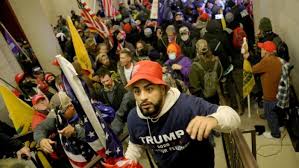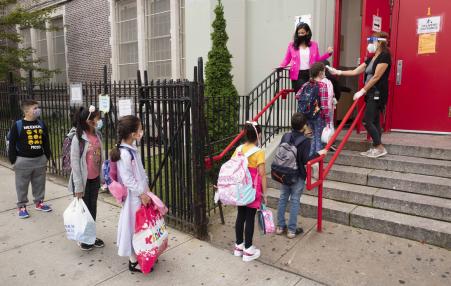It’s been a month since Gov. Gavin Newsom introduced his Safe Schools for All Plan, in which he aims to reopen schools for in-person learning by February or March. |
However, with the Feb. 16 deadline to open schools looming, there’s no telling how many districts have actually signed on to adopt the plan. Education leaders and teachers have openly criticized it, and negotiations over details appear to be at a standstill. Parents, eager to get their children back to in-person learning this year, have organized a campaign to safely reopen schools once case numbers decline. |
The debate echoes what’s going on across the country, as President Biden’s push to open schools in his first 100 days has been met with caution from teachers’ unions, who want to tamp down expectations that students will be back in classrooms before the end of the school year. |
Here’s what we know about the state of reopening schools so far. |
Mr. Newsom’s plan is in danger of failing. |
This week, the Centers for Disease Control and Prevention announced that schools could be opened safely, but the message came with a caveat: It’s safe only if other precautions are made to stop community spread. That means tightening, not loosening, restrictions, as Mr. Newsom did this week. |
“Prioritizing schools is going to mean limiting some of those other activities, and deciding that we want to undertake some of those sacrifices to keep schools open, because we’ve decided as a society that schools are important relative to other things,” Dr. Oster said. |
The governor’s plan calls for schools to reopen once the rate of infection falls to 25 positive cases per 100,000 county residents. |
Although cases in California are declining, hospitalization rates are still higher than they were when the strictest lockdown measures were announced. Currently, most of the state’s population falls under the most restrictive purple tier. |
In addition, the plan’s $2 billion grant fund, which breaks down to $450 per pupil, falls short of what’s needed for schools to operate safely, some say. It’s largely because the plan calls for increased virus testing of students and staff, which individual schools would have to pay for. |
Leaders of four of the state’s largest school districts criticized the plan in a letter, saying it fails to address the needs of urban school districts, all of which have students who live below the poverty level. They also asked that public health funds, not money that was already slated for education, be used to pay for the additional safety measures and mentioned the lack of clear consistent guidelines coming from leaders. |
Parents and legislators are adding to the pressure to open schools. |
This month, lawmakers advanced Assembly Bill 10 as emergency legislation that if passed, would require public schools to reopen within two weeks of moving out of the purple tier. |
It was created in response to the fact that some school districts didn’t reopen for in-person instruction, despite being eligible last year. |
The bill calls for schools to open their doors once they reach the red tier, which means having a significantly lower number of cases than what the governor’s plan calls for. |
Advocates of the bill point to the fact that low-income families have been struggling to access the technology needed to sustain virtual learning, leading to a deepening socioeconomic divide. Private schools, like the one Mr. Newsom’s children attend, have been open for in-person learning for months. |
Also backing the bill are parents, who recently organized into a group called Open Schools California and have started a public campaign to reopen schools. |
They cite studies that show low transmission rates of Covid-19 in schools and anecdotal evidence from their own children, who they say have been hurt by distance learning. |
Teachers are demanding more leadership and protection. |
Many teachers and school staff members say they won’t go back to in-person learning in the current climate, with cases still at extremely high levels and more variants emerging. |
Another sticking point are vaccines, which many say are nonnegotiable for returning to classrooms. The California Teachers Association stipulated the need for vaccines and said no to reopening schools while in the purple tier in a letter to the governor on Wednesday. |
Mr. Newsom has said that teachers will be included in the priority list for next month’s shots. However, there are not enough vaccines to go around as it is. |
“The virus is in charge right now and it does not own a calendar,” said members of the C.T.A. “We cannot just pick an artificial calendar date and expect to flip a switch on reopening every school for in-person instruction.” |
California Today. New York Times. |



